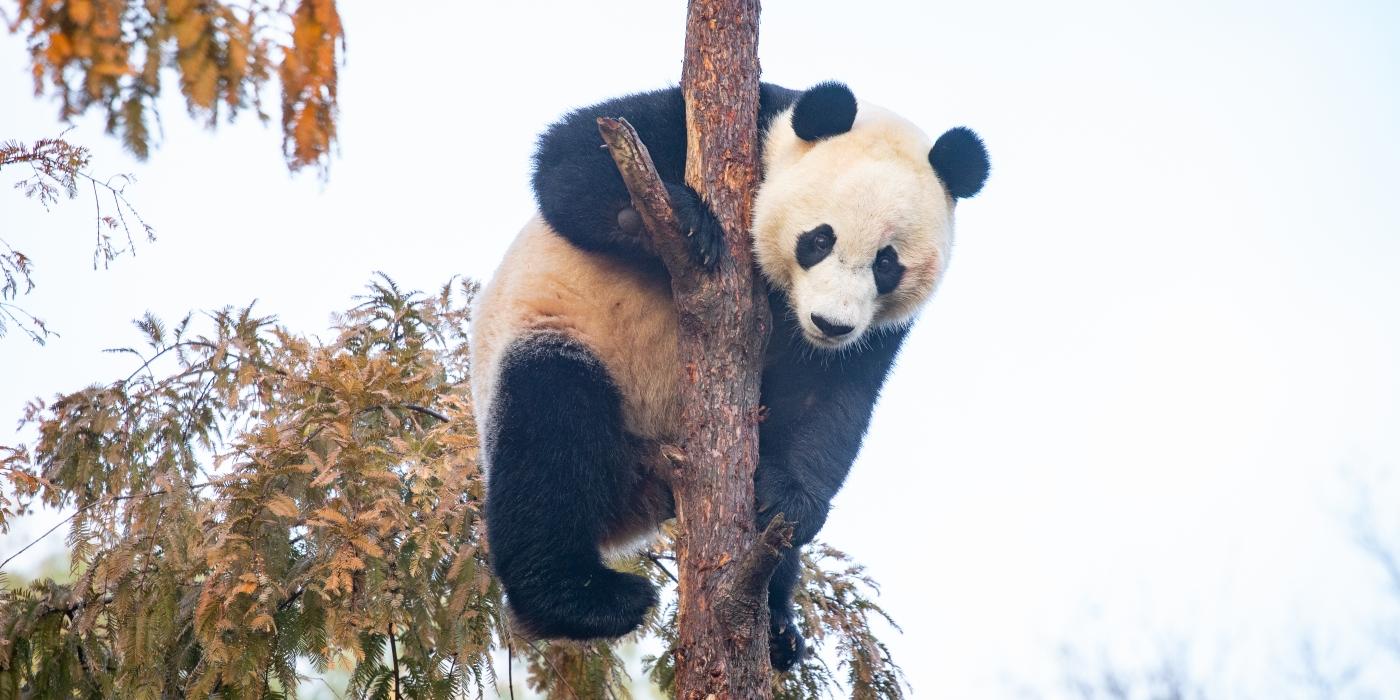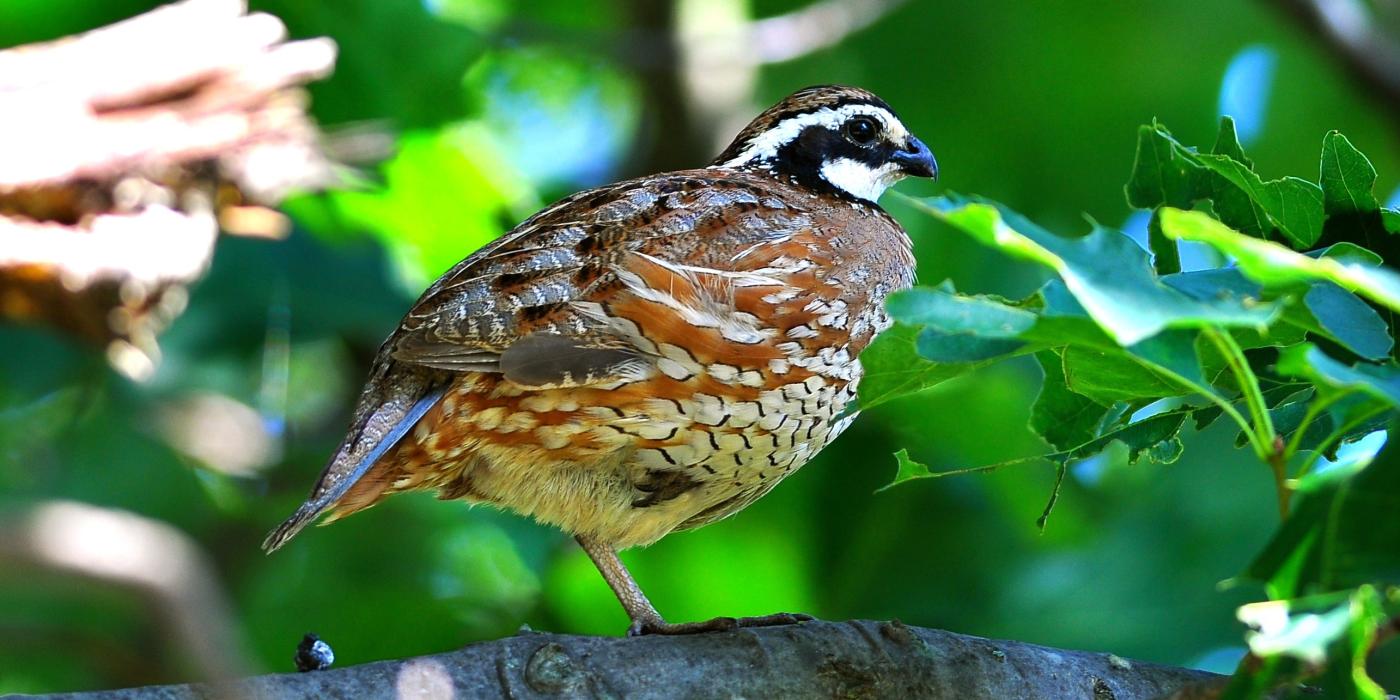A Day in the Life of Virginia Working Landscapes
Get a glimpse into a day in the life of Virginia Working Landscape scientists! This update was written by Virginia Working Landscapes intern Kelsey Schoenemann and outreach coordinator Charlotte Lorick.
Who we are
Virginia Working Landscapes (VWL) is a program of the Smithsonian Conservation Biology Institute (SCBI) based out of Front Royal, VA. We partner with a regional network of organizations, landowners, and citizen scientists in order to conduct innovative research on Virginia's native plants and wildlife and to inspire conservation action in our community. Our focal area currently covers a 16-county region surrounding the Shenandoah National Park, although we are always looking for ways to expand our reach.
Every year, we team up with SCBI scientists, graduate students, interns and citizen scientists to conduct biodiversity research in "working landscapes" (i.e., areas actively used for agriculture or forestry). This work is critically needed to help us understand the factors that affect Virginia's native biodiversity and also to develop the best land management practices that will benefit people and wildlife.
Music | Audio Network
What we study
A large portion of VWL's research is focused on native grassland ecosystems, in part because relatively little research has been done in these habitats compared to forests, wetlands, streams or riparian zones—the interface between land and a river or stream.
People are often surprised to learn that, even in precolonial times, Virginia featured extensive grasslands and rich meadows that hosted a diverse array of native plants—including warm season grasses, herbaceous forbs and perennial wildflowers—as well as pollinators, birds and other species that depend on those plants.
However, over the past 200 years, our agricultural tradition has transformed Virginia's landscape. Native grasslands and meadows have been almost-entirely lost due to historic conversion to Eurasian cool season grasses, intensive land management and pesticide use, and more recently, invasion by non-native plant species. Therefore, VWL's research program broadly addresses the question, how do Virginia's native species respond to modern land management practices?
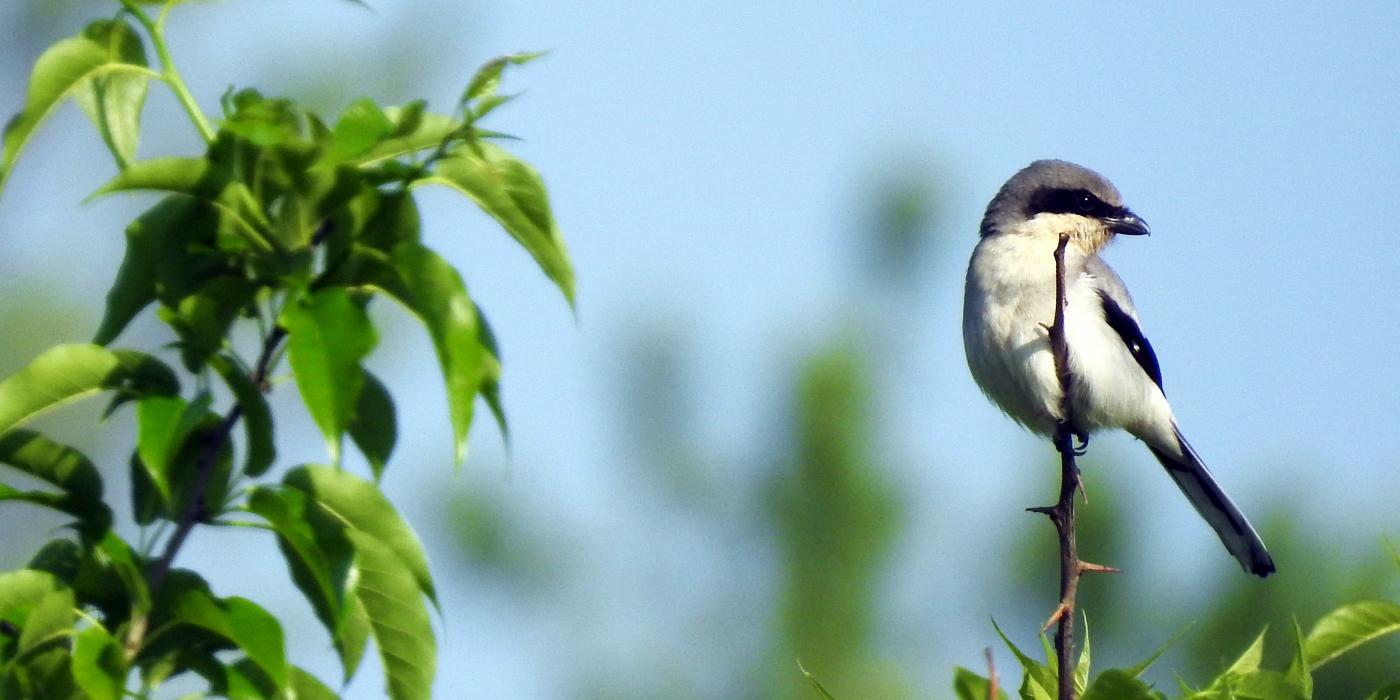
Grassland species need help
Although some grassland species probably benefited from modern agricultural practices, most have not. Many plants and animals that depend on grasslands have declined over the last half century, due primarily to the loss or fragmentation of their native habitat.
For example, this photo shows a loggerhead shrike, a predatory songbird uniquely adapted to grassland habitats, and one of only a few individuals known to still breed here in Virginia. Like the rusty-patched bumblebee, the loggerhead shrike was once common and widespread in Virginia, but has now almost completely disappeared.
Understanding the causes of decline in these species is important not only to the restoration of imperiled populations, but also to prevent the loss of other species that we currently take for granted.

Why protect grassland biodiversity?
Humans receive all sorts of tangible and intangible benefits from nature that are essential to our well-being and economic prosperity. While sometimes difficult to conceptualize, these 'services' are all around us—from the cultural and spiritual benefits gained from a walk in nature, to the pollination services provided by bees and other animals—and they contribute tremendous value to our daily lives.
Yet, as the quantity and quality of remaining native grasslands declines, the survival of the plants and animals that regulate and sustain our way of life is threatened. Since everything we enjoy ultimately comes from nature, we should act to protect it.
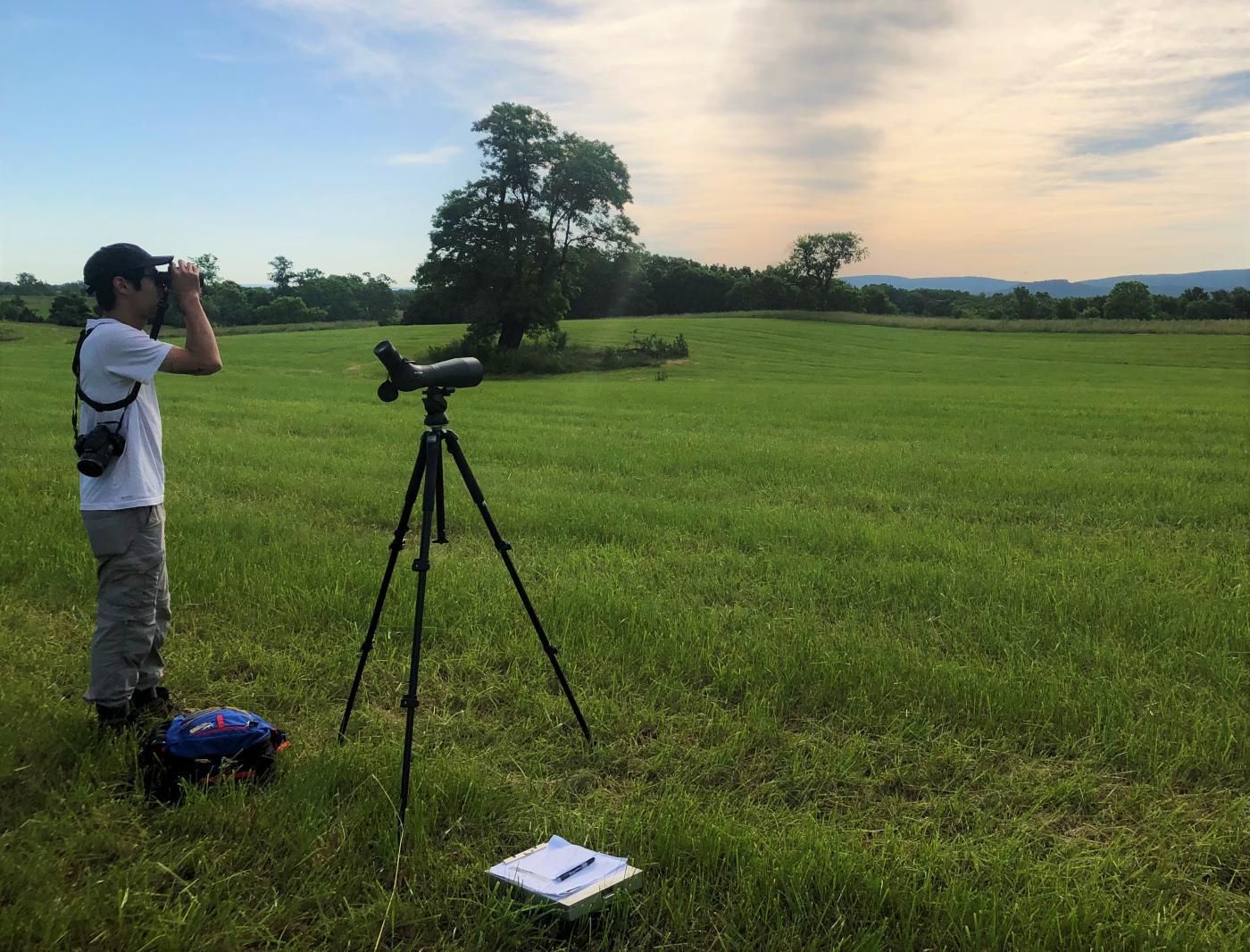
Conservation without borders
The plight of grassland species are not unique to Virginia. Nationwide, birds that depend on grass- and shrubland habitats for survival have experienced a steeper, more consistent, decline than any other group. Results from the North American Breeding Bird Survey have shown declines in 32 of 37 North American grassland-associated species between 1966 and 2004.
The loggerhead shrike inhabits grasslands across the country, from Texas in the south to Canada in the north; but today, they are threatened or endangered in many of those states. Here, VWL intern Baron Lin is helping to develop a range-wide monitoring protocol for this vulnerable species. Once deployed, this protocol would enable citizen scientists all across the United States to contribute to much-needed research and conservation efforts for this unique bird.
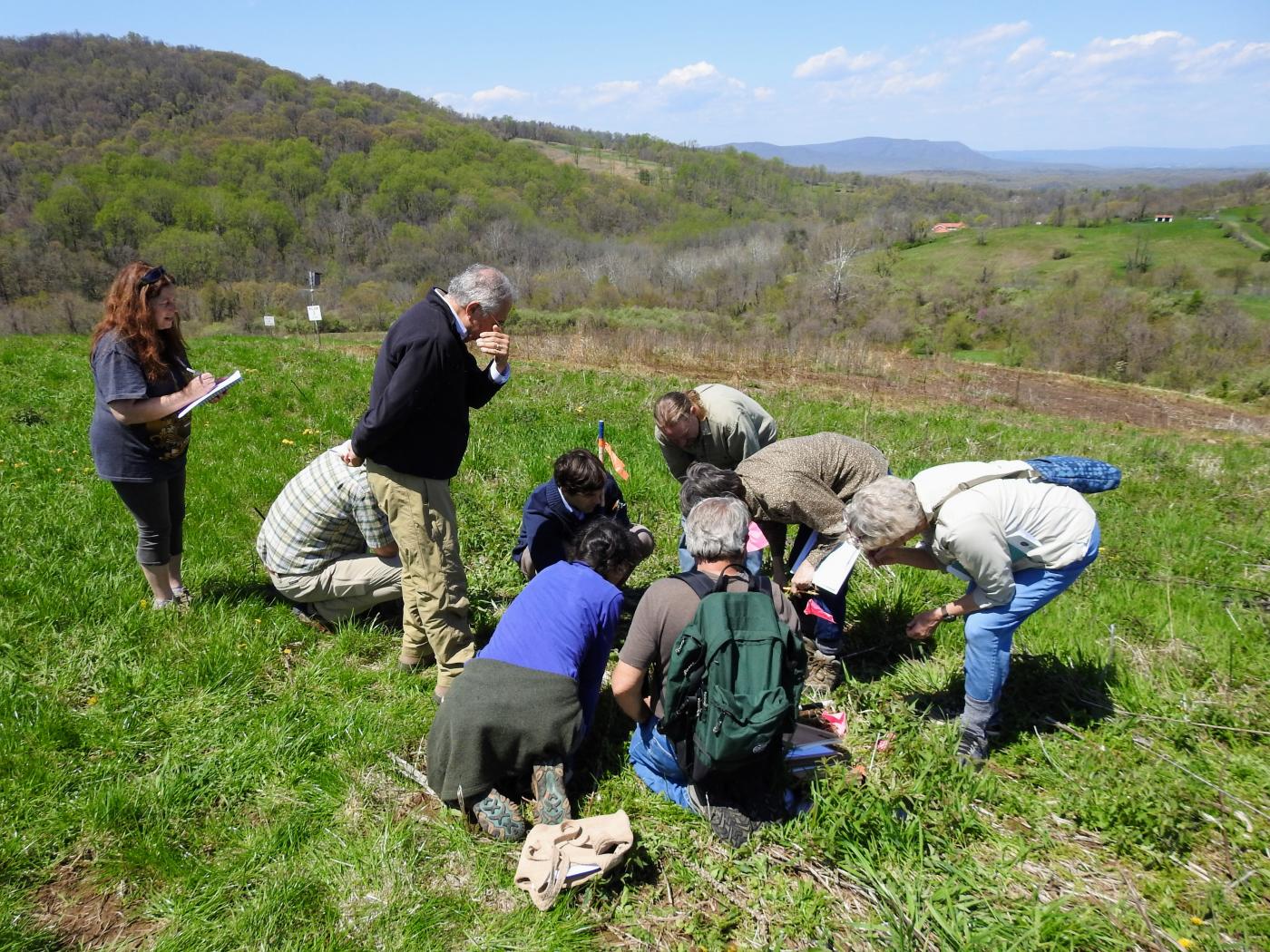
The role of citizen science
To conduct much of our research, VWL relies on engagement from the people living in our region. Each year, we train a dedicated group of citizen scientists to conduct biodiversity surveys on private and public lands. These individuals play an important role both as researchers, and as conservation ambassadors in the community. Here, the newest batch of citizen scientists are being trained on how to conduct detailed plant surveys in grassland habitats.

Trial by fire
There are countless unanswered questions about the basic ecology and threats facing grassland species, and perhaps just as many questions about how best to go about getting the answers.
For example, if we want to know whether or not birds are able to breed successfully in a given area, we need to know where nests are located and how many young survive to fledge. However, nest searching conducted by humans can increase the intensity of nest depredation.
VWL is working with researchers at SCBI and James Madison University to develop methods to use unmanned aerial systems (drones) equipped with thermal cameras to locate nests of grassland bird species such as the grasshopper sparrow or eastern meadowlark. These techniques could even be used in endangered species and population monitoring in grasslands all across the country.
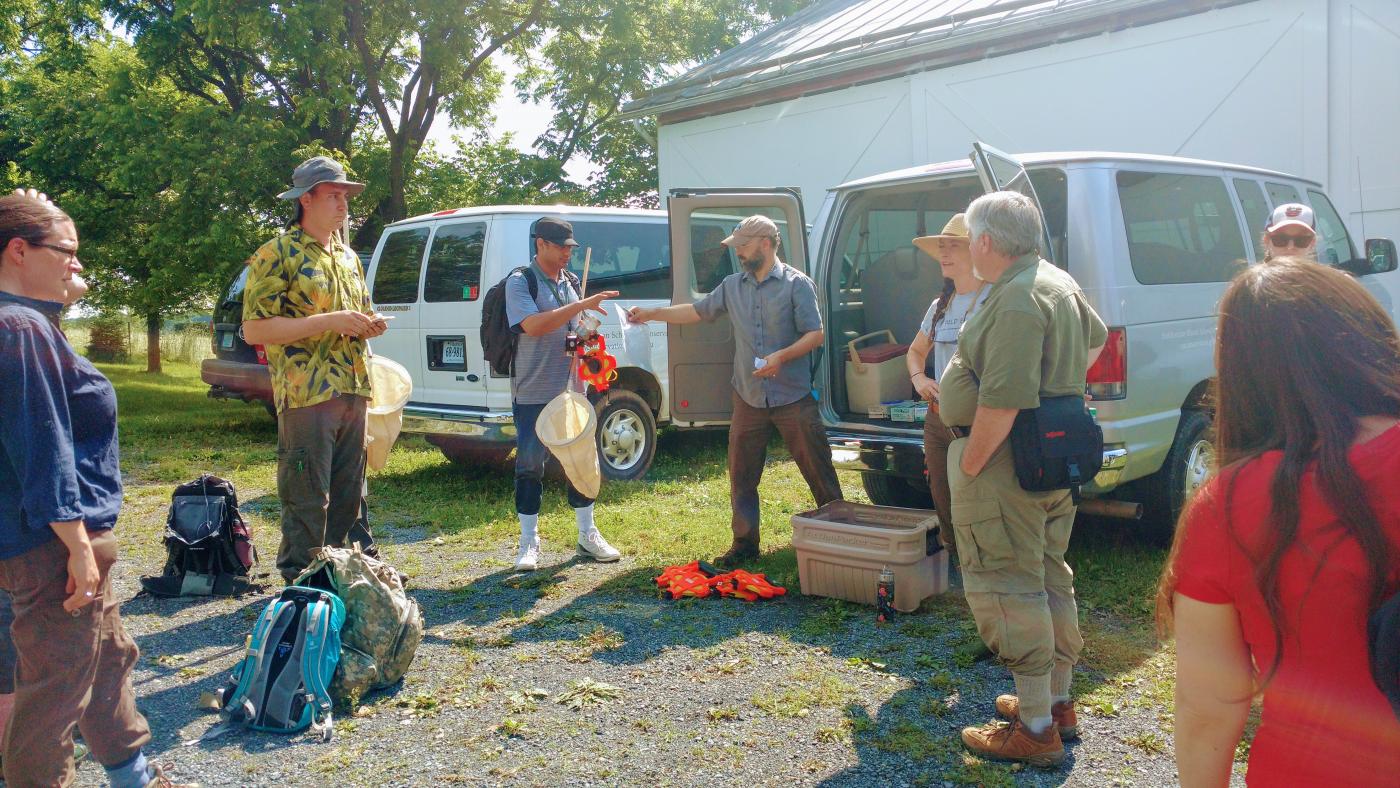
Working together to generate and share information
Collaboration is a central pillar in VWL's research approach, and the recently-initiated "Arthropod Diversity and Nutritional Quality" project illustrates this precept perfectly. Arthropods, including insects, spiders and crustaceans, are inextricably linked to the stability of both terrestrial and freshwater ecosystems, in part because they are simply the most abundant and diverse group of animals on the planet.
To carry out this work, we are partnering with the Smithsonian’s National Zoo’s Department of Nutrition Sciences, the Smithsonian-Mason School of Conservation and the Shenandoah Chapter of the Virginia Master Naturalists to understand arthropod community responses to land management.
Each group contributes their own unique expertise to the project -- from the identification of research questions, to the coordination of field work and laboratory analyses of samples, to the statistical interpretation and communication of data. Furthermore, we rely on collaborations with our partners to facilitate information-sharing within and beyond our network because we recognize that communication is an absolutely essential step needed to turn scientific knowledge into practical action.
What do bugs have to do with biodiversity?
Arthropods are important because they pollinate almost two-thirds of all flowering plants, decompose leaf litter and wood debris to form humus, and underpin complex food webs in almost every region they inhabit.
Yet, arthropods are overlooked, and we know relatively little about how land management can influence arthropod-mediated ecosystem services. The "Arthropod Diversity and Nutritional Quality" study will quantify how land management (such as the planting of native versus non-native grasses) influences arthropod diversity and nutritional quality. We aim to use this information to highlight the importance of arthropod communities for supporting ecosystem function and further engage the local community on Virginia’s native biodiversity.
Education programs and events
To share our knowledge and expertise, VWL works with partners to lead public lectures, seminars, workshops and courses that focus on a wide range of conservation topics. In addition, we work with the Smithsonian-Mason School of Conservation to support an intern and graduate fellow program that trains the future leaders in conservation science and practice.
Direct community engagement
To encourage the adoption of land management practices that protect native biodiversity, VWL engages directly with the community through outreach events that facilitate information sharing between landowners, conservation managers and community members.
For example, VWL recently participated in a summer camp activity for middle and high school students, where our intern Baron had the opportunity to talk to kids about the plight of native birds and how to identify common bird species. In addition, VWL's outreach coordinator, Charlotte Lorick, was invited to speak about the role of native species at Over Jordan Farm as part of a hands-on learning series about sustainable agriculture.
What you can do
The overwhelming majority of land in Virginia is held in private hands, with more then 90 percent of grasslands privately-owned. Therefore, landowners and citizens like you are the stewards of most of the natural resources in Virginia.
How can you help Virginia's native species? There are lots of ways to get started.
Consider replacing some or all of your lawn with a native meadow or forest, try placing nest boxes for cavity-nesting birds and for solitary bees, plant native species and remove invasive species from your landscaping.
You can also monitor plants and wildlife on your property, and record your observations on iNaturalist. You can map habitat improvements on your property using the Habitat Network. You can also donate your time and skills to participate in research programs like VWL and others.
One last thing
One of the best things you can do is get outside and enjoy nature. Become engaged with your community, and familiarize yourself with your area's unique natural resources and cultural history. What are you waiting for? Grab your friends, grab your family and start exploring!
This story appears in the September 2018 issue of National Zoo News.



